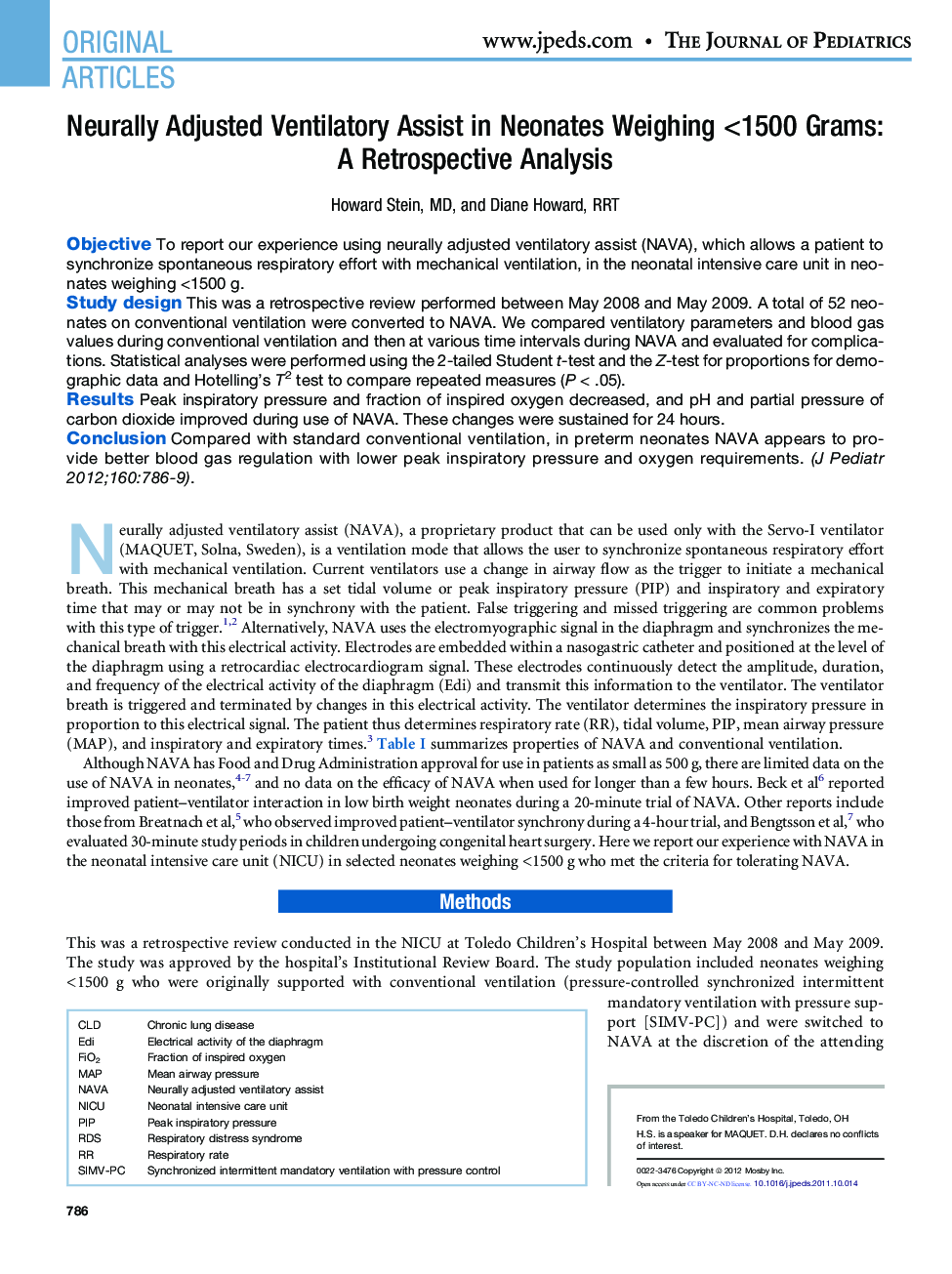| Article ID | Journal | Published Year | Pages | File Type |
|---|---|---|---|---|
| 6224506 | The Journal of Pediatrics | 2012 | 5 Pages |
ObjectiveTo report our experience using neurally adjusted ventilatory assist (NAVA), which allows a patient to synchronize spontaneous respiratory effort with mechanical ventilation, in the neonatal intensive care unit in neonates weighing <1500 g.Study designThis was a retrospective review performed between May 2008 and May 2009. A total of 52 neonates on conventional ventilation were converted to NAVA. We compared ventilatory parameters and blood gas values during conventional ventilation and then at various time intervals during NAVA and evaluated for complications. Statistical analyses were performed using the 2-tailed Student t-test and the Z-test for proportions for demographic data and Hotelling's T2 test to compare repeated measures (P < .05).ResultsPeak inspiratory pressure and fraction of inspired oxygen decreased, and pH and partial pressure of carbon dioxide improved during use of NAVA. These changes were sustained for 24 hours.ConclusionCompared with standard conventional ventilation, in preterm neonates NAVA appears to provide better blood gas regulation with lower peak inspiratory pressure and oxygen requirements.
